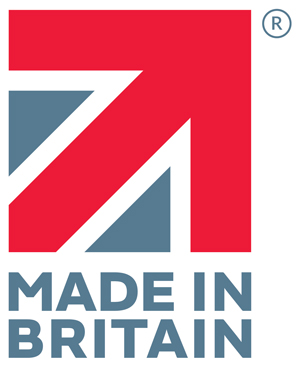Perfecting The Art of Self-Sustainability with a Keder Greenhouse
In today’s world, where environmental concerns and economic instability are increasingly in focus, the concept of self-sustainability is more prevalent than ever.
One of the key strategies for achieving a self-sustaining lifestyle is the use of a Keder greenhouse. This simple yet powerful structure allows individuals to grow their own food year-round, reducing dependence on commercial agriculture and contributing to a more eco-friendly, self-reliant way of living.
What Is Self-Sustainability?
Self-sustainability refers to the ability to meet one’s needs—such as food, water, energy, and shelter—without relying excessively on external resources. While it’s challenging to be entirely self-sufficient in the modern world, significant strides can be made toward this goal by adopting practices that reduce reliance on external systems. Among these practices, growing your own food is perhaps the most empowering and impactful. Many of our customers are based in remote areas of the United Kingdom who are not able to drive to local shops to drive provisions.
The Keder Greenhouse Advantage
A Keder greenhouse offers an excellent way to extend your growing season, control environmental conditions, and increase the yield of crops. It is essentially a protective barrier that creates a microclimate, shielding plants from extreme weather conditions, pests, and diseases.
Here’s how you can harness the power of a Keder greenhouse to foster a self-sustainable lifestyle.
Year-Round Growing
Keder greenhouses allow for the extension of the growing season, meaning you can cultivate food even during colder months. By controlling temperature, humidity, and ventilation, you can simulate the ideal conditions for plants that would otherwise perish in outdoor climates. This is particularly beneficial for colder regions where the natural growing season is short.
With the right design and planning, a Keder greenhouse can be used to grow a variety of crops, such as leafy greens, herbs, tomatoes, and even tropical fruits. Incorporating heating systems like solar heaters or thermal mass can make it easier to maintain optimal temperatures, even in the winter.
Maximising Space and Efficiency
Due to the unique multiplication of diffused light through the Keder cladding, there are no shadows and no scorch. A Keder greenhouse provides the optimum growing environment for your plants, using vertical spaces or staggered planting methods to make the most of available room. Raised beds, hydroponic systems, or vertical gardening techniques can significantly increase the number of crops grown in a small area. In a confined space, one can cultivate a diverse range of crops, reducing the need for external food sources.
Additionally, being able to plant in tiers and layers optimises land usage. This method not only provides more produce in a smaller footprint but also promotes crop rotation and companion planting, which improves soil health and reduces pest infestations naturally.
Self-Sustaining Food Supply
The ultimate goal of a Keder greenhouse is to foster a continuous, renewable food supply. With careful planning, you can grow a wide array of crops throughout the year. A greenhouse can also provide a protected space for seedlings before they are transplanted outdoors, or serve as a year-round food producer, ensuring you have fresh produce even during the winter.
For those practicing a self-sustaining lifestyle, producing your own food has numerous benefits. It reduces your dependence on store-bought produce, which can fluctuate in price and availability due to market conditions. Additionally, you know exactly what goes into the food you grow, allowing for a fully organic, chemical-free diet.
Reducing Environmental Impact
Growing your own food in a Keder greenhouse can significantly reduce your carbon footprint. You’ll rely less on transported goods, which lowers the fuel and energy required to bring produce from faraway farms to your plate. Moreover, by managing water usage through irrigation systems like drip watering or rainwater collection, you can conserve water and reduce waste.
A well-designed greenhouse also limits the need for pesticides and fertilizers. By creating an ideal growing environment and using natural pest control techniques – like introducing beneficial insects or growing pest-repellent plants you avoid the harmful chemicals often associated with commercial farming.
Greenhouse Tips for Self-Sustainability
To maximise the benefits of your greenhouse, consider the following tips:
Choose the Right Location
The placement of your greenhouse is key to its success. Select a spot that receives plenty of sunlight throughout the day, as plants need light to grow. In cooler climates, a south-facing orientation will capture the most sunlight. In warmer areas, some shade may be necessary to prevent overheating.
Due to the strength of a Keder Greenhouse it can be placed in exposed areas as it can withstand wind up to 120 miles per hour.
Monitor and Maintain the Environment
A Keder greenhouse allows you to control various environmental factors, but it also requires careful attention. You’ll need to monitor temperature, humidity, and ventilation to ensure plants remain healthy. Automated systems like thermostats, fans, and timers can simplify this task, but even a basic setup can be managed manually with proper diligence.
Select the Right Plants
To make the most of your Keder greenhouse, choose plants suited to your climate and growing season. In cooler months, grow hardy vegetables like spinach, kale, and carrots, while the summer season is ideal for tomatoes, cucumbers, and peppers. Depending on your goals, you can also experiment with exotic or hard-to-grow plants that would otherwise struggle outdoors.
Composting and Recycling
Incorporating composting into your greenhouse setup is a great way to create a closed-loop system. Organic waste, such as kitchen scraps and plant trimmings, can be composted to provide nutrient-rich soil for your crops. Additionally, using recycled materials for garden beds or watering systems promotes sustainability.
Water Conservation
Watering systems, such as drip irrigation or rainwater collection, can conserve water and ensure your plants are hydrated. Consider investing in a rainwater barrel to capture and reuse water efficiently. Plants in a greenhouse typically require less water than outdoor plants due to controlled humidity levels, so this is another aspect where savings can be made.
The Broader Picture of Self-Sustainability
Greenhouses are only one piece of the larger puzzle of self-sustainability. To truly embrace a self-sufficient lifestyle, it’s essential to incorporate other sustainable practices into your routine. For example:
- Solar Energy – Using renewable energy sources such as solar panels can power your greenhouse and home, reducing reliance on the grid.
- Permaculture – This holistic approach to agriculture and design encourages working with natural systems, such as rainwater harvesting, composting, and soil health management.
- Preserving and Storing Food – Learning to preserve food through canning, dehydrating, or fermenting ensures that you make the most of your harvest and reduce waste.
- Livestock and Poultry – For those with more space, raising chickens, bees, or small livestock adds another layer to your self-sustaining food system.
Conclusion
For the small Keder team based in Offenham, not only do we design and build greenhouses, but we also grow our own crops. We utilise rainwater harvesting systems and solar panels. We buy as much of our raw materials from local companies, and we utilise a pallet network for delivery of our products, so we share the transport through an overnight palletised network.
Building and utilising a greenhouse is an essential step toward self-sustainability. It empowers individuals to grow their own food year-round, minimises environmental impact, and fosters a sense of independence. In combination with other sustainable living practices, such as energy conservation and waste reduction, a greenhouse can be a cornerstone of a self-sufficient lifestyle.
By embracing the art of self-sustainability, you not only become more resilient to external changes but also contribute to a healthier, more sustainable world for future generations.
#SelfSustainability #SustainableLiving #GrowYourOwnFood #EcoFriendlyLiving #ZeroWasteLifestyle #GreenLiving #PermacultureLife #OffGridLiving #OrganicGardening #crofting #SustainableFarming #EcoConscious #GreenThumb #RenewableLiving #MinimalistLiving #EarthFriendly #FarmToTable #SustainableFuture #EcoWarrior #kedergreenhouse #kedercommunity


